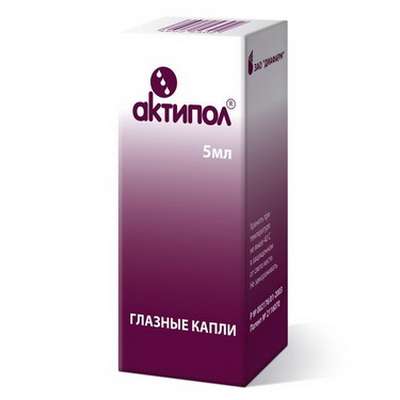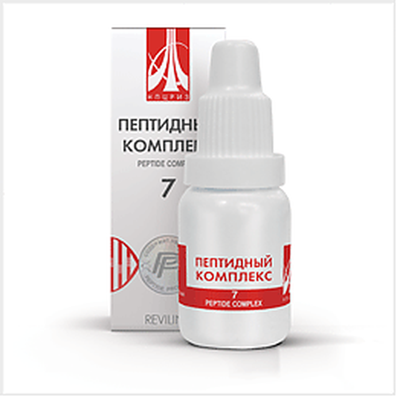Instruction for use: Aceclofenac
I want this, give me price
Active substance Aceclofenac
Dosage form
Film-coated tablets -
Composition
Composition of 1 tablet:
Active substance:
Aceclofenac 100.0 mg.
Excipients;
Cellulose microcrystalline - 89.2 mg, povidane - 6.6 mg, croscarmellose sodium - 6.6 mg, glntseryl distearate - 2.6 mg.
Film Sheath:
Vivacoat RM-1R-000 white - 6.0 mg, and so on. hypromellose 3.0 mg, macrogol 0.3 mg, hydroxypropyl cellulose 0.3 mg, talc 0.6 mg, titanium dioxide 1.8 mg.
Description of dosage form
The tablets covered with a film cover, white or almost white color, round, biconcave form. On the cross-section, the nuclei of the tablets are white or almost white in color.
Pharmacological group
Non-steroidal anti-inflammatory drug (NSAID).
Pharmacodynamics
Aceclofenac is a derivative of phenylacetic acid, indiscriminately inhibits cyclooxygenase I and II types. Aceclofenac has an anti-inflammatory, analgesic and antipyretic effect. Oppresses the synthesis of prostaglandins and, thus, affects the pathogenesis of inflammation, the onset of pain and fever. In rheumatic diseases, the anti-inflammatory and analgesic effects of aceclofenac contribute significantly to reducing the severity of pain, morning stiffness, swelling of the joints, which improves the functional state of the patient.
Pharmacokinetics
Suction
Aceclofenac is rapidly and completely absorbed after ingestion. The time to reach the maximum concentration is 1.25-3 hours.
Distribution
It penetrates into the synovial fluid, where its concentration reaches 57% of the concentration level in the plasma, and the time to reach the maximum concentration is 2-4 hours later than in the plasma. The volume of distribution is 30 liters. The connection with plasma proteins (albumins) is 99%.
Metabolism
Aceclofenac is metabolized by the CYP 2 C 9 isoenzyme with the formation of a metabolite of 4-hydroxyacetylfenac, whose contribution to the clinical effect of the drug is likely to be minimal.
Excretion
The half-life is 4 hours. The ground clearance is 5 l / h. It is excreted by the kidneys, mainly in the form of hydroxy derivatives (about 2/3 of the administered dose). Only 1% of the dose after ingestion is excreted unchanged
Indications
Symptomatic treatment of rheumatoid arthritis, osteoarthrosis, ankylosing spondylitis (Bekhterev's disease). Coping of inflammation and pain syndrome with lumbago, toothache, humeropathy periarthritis, rheumatic soft tissue damage. The drug is designed to reduce pain and inflammation at the time of use, the progress of the disease is not affected.
Contraindications
Hypersensitivity (including other non-steroidal anti-inflammatory drugs (NSAIDs)), complete or incomplete combination of bronchial asthma, recurrent nasal polyposis and paranasal sinuses and intolerance to acetylsalicylic acid or other NSAIDs (including history), erosive and ulcerative lesions of the gastrointestinal tract and duodenum, active gastrointestinal bleeding, inflammatory bowel disease; severe renal failure (QC less than 30 ml / min), progressive kidney disease; active liver disease; Thyroid gland diseases; confirmed hyperkalemia, acute myocardial infarction; period after aortocoronary shunting; hypotension, hypertension; acute disorders of cerebral circulation (ischemic, hemorrhagic stroke); diseases of bone marrow and blood (leukopenia, including history, thrombocytopenia, hemophilia), myelosuppression; severe myopathy, severe myasthenia gravis; . Pregnancy, the period of breastfeeding, children's age (under 18)
Carefully
Peptic ulcer and duodenal ulcer, ulcerative colitis, Crohn's disease, liver disease in history, hepatic porphyria, chronic renal failure (CK 30-60 ml / min), chronic heart failure, arterial hypertension, a significant decrease in the volume of circulating blood (including after surgery), elderly patients (including receiving diuretics, weakened patients and patients with low body weight), bronchial asthma, simultaneous reception of glucocorticosteroids (including prednisolone (including warfarin), antiplatelet agents (including acetylsalicylic acid, clopidogrel), selective serotonin reuptake inhibitors (including citalopram, fluoxetine, paroxetine, sertraline), ischemic heart disease, cerebrovascular diseases, dyslipidemia / hyperlipidemia, diabetes mellitus, peripheral arterial disease, smoking, the presence of Helicobacter pylori infection, prolonged use of NSAIDs, tuberculosis, severe osteoporosis, alcoholism, severe physical illnesses.
pregnancy and lactation
The drug is contraindicated during pregnancy (see section "Contraindications"). Information about the use of aceclofenac during pregnancy is absent. Regular use of NSAIDs in the last trimester of pregnancy can lead to a decrease in tone and weaker uterine contractions. The use of NSAIDs may lead to a premature closure of the Botallov duct in the fetus and, possibly, to prolonged pulmonary hypertension in the newborn, a delay in the onset of labor and an increase in the duration of labor. In epidemiological studies in humans, no data were obtained indicating the toxicity of NSAIDs for the embryo. However, in rabbit experiments, the administration of aceclofenac (10 mg / kg / day) in some cases resulted in a number of morphological changes in the fetus. There is no evidence of a teratogenic effect in rats. Aceclofenac should not be taken during breastfeeding (see section "Contraindications"). Data on the isolation of aceclofenac with human milk are absent, with the administration of radioactive 14C-aceclofenac to lactating rats, no appreciable transfer of radioactivity into milk was observed,
Dosing and Administration
To reduce the risk of developing adverse events, the minimum effective dose should be used with the minimum possible short course. Inside. Tablets should be swallowed whole, with enough liquid. It is preferable to take aceclofenac during or after a meal. Usually adults are prescribed 100 mg 2 times a day in the morning and in the evening.
Older patients:
For elderly patients, the daily dose of aceclofenac or the frequency of its use is not required.
Patients with renal insufficiency:
There is no data on that. that a change in the daily dose of aceclofenac is required when used in patients with renal insufficiency. But, like with other NSAIDs, when applying aceclofe, it is necessary to exercise caution.
Patients with hepatic insufficiency:
The initial dose of aceclofenac in patients with hepatic insufficiency is 100 mg per day. The duration of therapy, without consulting a doctor, should not exceed 7 days.
Side effects
The incidence of side effects listed below was determined according to the following (classification of the World Health Organization): very often (more than 10%), often (more than 1% and less than 10%), infrequently (more than 0.1% and less than 1%), rarely (more than 0.01% and less than 0.1%), very rarely (less than 0.01%), including individual reports; the frequency is unknown (can not be estimated with available data).
From the gastrointestinal tract:
often - nausea, vomiting, diarrhea, epigastric pain, intestinal colic, dyspepsia, flatulence, anorexia, constipation; in rare cases - the occurrence of erosive and ulcerative lesions, bleeding and perforations of the gastrointestinal tract (bloody vomiting, melena), stomatitis (including aphthous), pancreatitis.
From the nervous system:
rarely headache, dizziness, sleep disturbances (insomnia or drowsiness), agitation; in some cases violations of sensitivity,
disorientation, memory impairment, sight, hearing, taste sensation, tinnitus, cramps, irritability, tremor, depression, anxiety, vertigo. aseptic meningitis, paresthesia.
Allergic reactions:
uncommon skin rash; rarely - urticaria, bronchospasm, systemic anaphylactic reactions; very rarely - vasculitis, pneumonitis, Stevens-Johnson syndrome and Lyell's syndrome, anaphylactic shock, discoid lupus erythematosus; isolated cases of eczema, polymorphic erythema, erythroderma.
From the side of the kidneys and urinary tract:
rarely peripheral edema; very rarely - acute renal failure, interstitial nephritis, nephrotic syndrome, hematuria, proteinuria.
From the side of the liver and bile ducts:
Rarely, hepatitis; very rarely - fulminant hepatitis.
From the hematopoiesis:
very rarely - leukopenia; Some cases of development of thrombocytopenia, agranulocytosis, hemolytic anemia, aplastic anemia, neutropenia are described.
From the cardiovascular system:
there were isolated cases of tachycardia, arterial hypertension, congestive heart failure, coronary heart disease (CHD).
Disturbances from the respiratory system:
rarely shortness of breath, pulmonary edema;
very rarely bronchospasm.
Disturbances from the musculoskeletal and connective tissue:
isolated cases of occurrence of seizures of the Nog,
Laboratory indicators:
often - transient increase in transaminase activity in the blood; infrequently, an increase in the concentration of urea and creatinine in the blood; very rarely an increase in the level of alkaline phosphatase in the blood.
Overdose
Symptoms
The clinical picture is determined by violations from the central nervous system (headache, dizziness, hyperventilation with increased convulsive readiness) and gastrointestinal disorders (abdominal pain, nausea, vomiting).
Treatment:
In case of an overdose, rinsing of the stomach, administration of activated charcoal, symptomatic therapy are shaken. There is no specific antidote. Forced diuresis, hemodialysis, blood transfusion - ineffective.
Interaction
With the simultaneous use of aceclofenac and:
digoxin, phenytoin, or lithium preparations - the level of plasma levels of these drugs may increase;
diuretics and antihypertensive drugs - the effect of these drugs may be weakened;
potassium-sparing diuretics - can lead to the development of hyperglycemia and hyperkalemia. With this combination of funds, control of the level of cadia and blood plasma is necessary.
other CPAP or oral glucocorticosteroids (prednisolone) - increased risk of side effects from the gastrointestinal tract;
selective serotonin reuptake inhibitors (tsntalopram, fluoxetine, paroxetine, sertraline) - the risk of developing gastrointestinal bleeding increases;
cyclosporine and tacrolimus - the toxic effect of drugs on the kidney may increase;
antidiabetics - can cause both hypo- and hyperglycemia. With this combination of funds, blood sugar levels need to be monitored;
methotrexate within 24 hours before or after its administration - may lead to an increase in the concentration of methotrexate and to an increase in its toxic effect;
Acetylsalicylic acid - the concentration of aceclofenac in the blood decreases;
antiplatelet agents and anticoagulants (warfarin, clopidogrel) - the risk of bleeding increases (regular coagulation monitoring is necessary);
mifepristone - do not take aceclofenac, like other NSAIDs, within 8-12 days after using mifepristone because of the risk of reducing its effect;
quinolone antibiotics - increased risk of seizures;
zidovudine - increases the risk of bleeding, possibly the emergence of hemarthrosis and hematoma.
special instructions
During the treatment with the drug should be a systematic control of the picture of peripheral blood, liver function, kidneys, study of feces for the presence of crocs. Patients taking the drug should refrain from activities that require increased attention and rapid mental and motor reactions. During treatment, alcohol should be avoided. If there are signs of liver damage (pruritus, jaundice, nausea, vomiting, abdominal pain, darkening of urine, increased activity of "liver" transaminases), stop taking the drug and consult a doctor. In patients with hepatic insufficiency, kinetics and metabolism differ from similar processes in patients with normal liver function. Do not use the drug simultaneously with other NSAIDs. The drug can change the properties of platelets, but does not replace the preventive effect of acetylsalicylic acid in cardiovascular diseases. The use of the drug may adversely affect female fertility and is not recommended for women planning pregnancy. In patients with infertility (including undergoing examination) it is recommended to cancel the drug. Because of the important role of prostaglandins in maintaining renal blood flow, caution should be exercised in appointing patients with cardiac or renal insufficiency, elderly people taking diuretics, and patients with reduced circulating blood volume (for example, after extensive surgical intervention). If in such cases it is prescribed aceclofenac, it is recommended to monitor the kidney function. To reduce the risk of developing adverse events from the gastrointestinal tract, a minimum effective dose should be used with the minimum possible short course.
Impact on the ability to manage vehicles and mechanisms
Patients suffering from dizziness and other disorders from the central nervous system, during the period of taking aceclofenac should refrain from driving and working with dangerous mechanisms.
Form of issue
Tablets, film-coated, 100 mg. For 10 tablets in a contour mesh package, polymer with a lid. Each jar or 1, 2, 3, 4, 6, 9 contour cell packs
together with instructions for use in a pack of cardboard.
Storage conditions
In the dark place at a temperature of no higher than 25 ° C.
Keep out of the reach of children!
Shelf life
2 years.
Do not use after the expiration date.
Conditions of leave from pharmacies
Let go on prescription.

 Cart
Cart





